
S, or for lowercase, s, is the nineteenth letter of the Latin alphabet, used in the English alphabet, the alphabets of other western European languages and other latin alphabets worldwide. Its name in English is ess, plural esses.
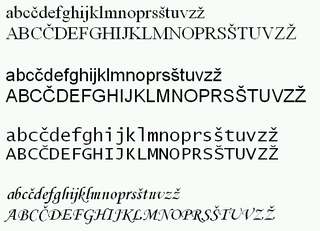
The Slovene alphabet or Slovenian alphabet is an extension of the Latin script used to write Slovene. The standard language uses a Latin alphabet which is a slight modification of the Croatian Gaj's Latin alphabet, consisting of 25 lower- and upper-case letters:

EzhEZH, also called the "tailed z", is a letter, notable for its use in the International Phonetic Alphabet (IPA) to represent the voiced postalveolar fricative consonant. This sound, sometimes transcribed /zh/, occurs in the pronunciation of ⟨si⟩ in vision and precision, the ⟨s⟩ in treasure, and the ⟨g⟩ in beige.

The Early Cyrillic alphabet, also called classical Cyrillic or paleo-Cyrillic, is an alphabetic writing system that was developed in Medieval Bulgaria in the Preslav Literary School during the late 9th century. It is used to write the Church Slavonic language, and was historically used for its ancestor, Old Church Slavonic. It was also used for other languages, but between the 18th and 20th centuries was mostly replaced by the modern Cyrillic script, which is used for some Slavic languages, and for East European and Asian languages that have experienced a great amount of Russian cultural influence.
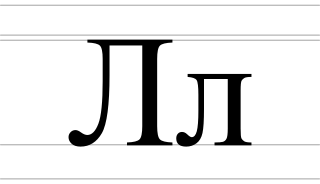
El is a letter of the Cyrillic script.

Ze is a letter of the Cyrillic script.

Che, Cha or Chu is a letter of the Cyrillic script.

Yeru or Eru, usually called Y in modern Russian or Yery or Ery historically and in modern Church Slavonic, is a letter in the Cyrillic script. It represents the close central unrounded vowel after non-palatalised (hard) consonants in the Belarusian and Russian alphabets.

The Ukrainian alphabet is the set of letters used to write Ukrainian, which is the official language of Ukraine. It is one of several national variations of the Cyrillic script. It comes from the Cyrillic script, which was devised in the 9th century for the first Slavic literary language, called Old Slavonic. In the 10th century, Cyrillic script became used in Kievan Rus' to write Old East Slavic, from which the Belarusian, Russian, Rusyn, and Ukrainian alphabets later evolved. The modern Ukrainian alphabet has 33 letters in total: 21 consonants, 1 semivowel, 10 vowels and 1 palatalization sign. Sometimes the apostrophe (') is also included, which has a phonetic meaning and is a mandatory sign in writing, but is not considered as a letter and is not included in the alphabet.
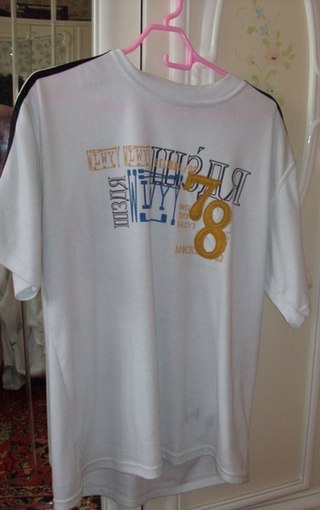
Faux Cyrillic, pseudo-Cyrillic, pseudo-Russian or faux Russian typography is the use of Cyrillic letters in Latin text, usually to evoke the Soviet Union or Russia, though it may be used in other contexts as well. It is a common Western trope used in book covers, film titles, comic book lettering, artwork for computer games, or product packaging which are set in or wish to evoke Eastern Europe, the Soviet Union, or Russia. A typeface designed to emulate Cyrillic is classed as a mimicry typeface.
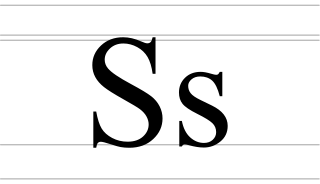
Dze is a letter of the Cyrillic script, used in the Macedonian alphabet to represent the voiced alveolar affricate, similar to the pronunciation of ⟨ds⟩ in "needs" or "kids" in English. It is derived from the letter dzelo or zelo of the Early Cyrillic alphabet, and it was used historically in all Slavic languages that use Cyrillic.

Ukrainian Ye or Round Ye is a character of the Cyrillic script. It is a separate letter in the Ukrainian alphabet, the Pannonian Rusyn alphabet, and both the Carpathian Rusyn alphabets; in all of these, it comes directly after Е. In modern Church Slavonic, it is considered a variant form of Ye (Е е). Until the mid-19th century, Є/є was also used in Romanian and Serbian. Other modern Slavonic languages may use Є/є shapes instead of Е/е for decorative purposes. Then, the letter is usually referred to by the older name Yest. If the two need to be distinguished, the descriptive name Broad E is sometimes used. It can also be found in the writing of the Khanty language.
The internationalized domain name (IDN) homograph attack is a method used by malicious parties to deceive computer users about what remote system they are communicating with, by exploiting the fact that many different characters look alike. For example, the Cyrillic, Greek and Latin alphabets each have a letter ⟨o⟩ that has the same shape but represents different sounds or phonemes in their respective writing systems.
The Common Turkic alphabet is a project of a single Latin alphabet for all Turkic languages based on a slightly modified Turkish alphabet, with 34 letters recognised by the Organization of Turkic States.

Ƽ was a letter of the Latin alphabet used in the Zhuang alphabet from 1957 to 1986 to indicate its fifth tone, high-rising. In 1986 it was replaced by q.

The Latin script, also known as the Roman script, is a writing system based on the letters of the classical Latin alphabet, derived from a form of the Greek alphabet which was in use in the ancient Greek city of Cumae in Magna Graecia. The Greek alphabet was altered by the Etruscans, and subsequently their alphabet was altered by the Ancient Romans. Several Latin-script alphabets exist, which differ in graphemes, collation and phonetic values from the classical Latin alphabet.

The Uzbek language has been written in various scripts: Latin, Cyrillic and Arabic. The language traditionally used Arabic script, but the official Uzbek government under the Soviet Union started to use Cyrillic in 1940, which is when widespread literacy campaigns were initiated by the Soviet government across the Union. In 1992, Latin script was officially reintroduced in Uzbekistan along with Cyrillic. In the Xinjiang region of China, some Uzbek speakers write using Cyrillic, others with an alphabet based on the Uyghur Arabic alphabet. Uzbeks of Afghanistan also write the language using Arabic script, and the Arabic Uzbek alphabet is taught at some schools.

The Metelko alphabet was a Slovene writing system developed by Franc Serafin Metelko. It was used by a small group of authors from 1825 to 1833 but it was never generally accepted.
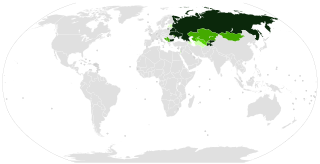
Numerous Cyrillic alphabets are based on the Cyrillic script. The early Cyrillic alphabet was developed in the 9th century AD and replaced the earlier Glagolitic script developed by the theologians Cyril and Methodius. It is the basis of alphabets used in various languages, past and present, Slavic origin, and non-Slavic languages influenced by Russian. As of 2011, around 252 million people in Eurasia use it as the official alphabet for their national languages. About half of them are in Russia. Cyrillic is one of the most-used writing systems in the world. The creator is Saint Clement of Ohrid from the Preslav literary school in the First Bulgarian Empire.
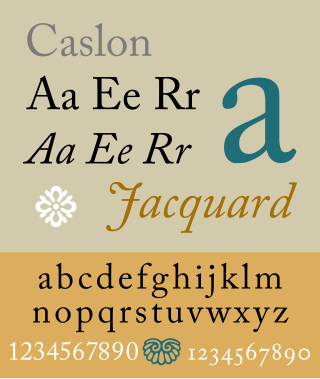
In the days of printing with metal type sorts, it was common to rotate letters and digits 180° to create new symbols. This was a cheap way to extend the alphabet that didn't require purchasing or cutting custom sorts. The method was used for example with the Palaeotype alphabet, the International Phonetic Alphabet, the Fraser script, and for some mathematical symbols. Perhaps the earliest instance of this that is still in use is turned e for schwa.



















